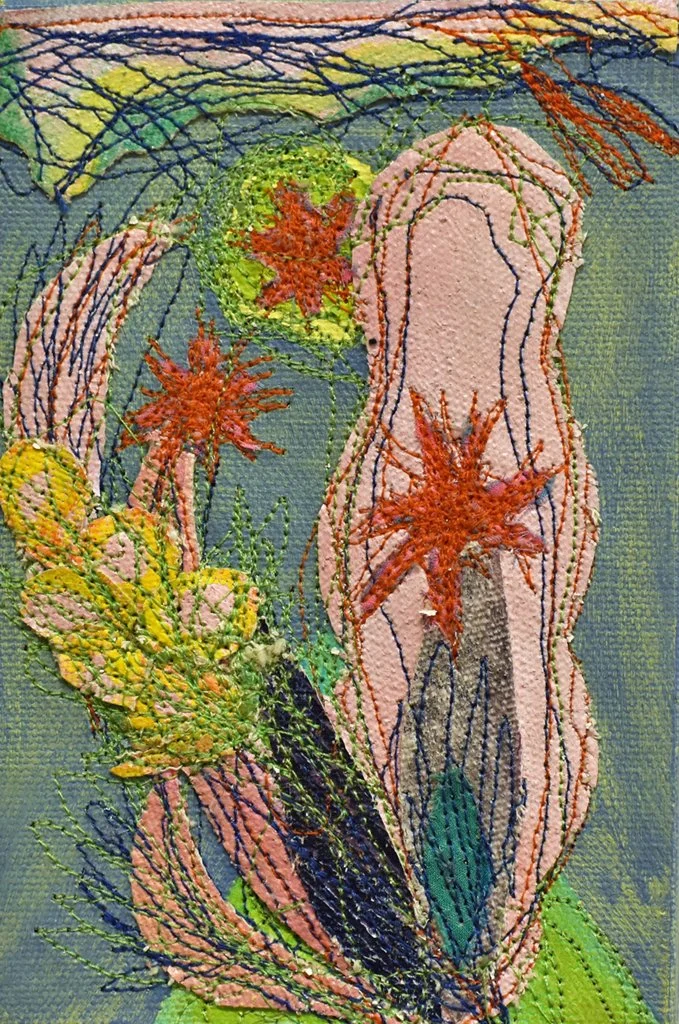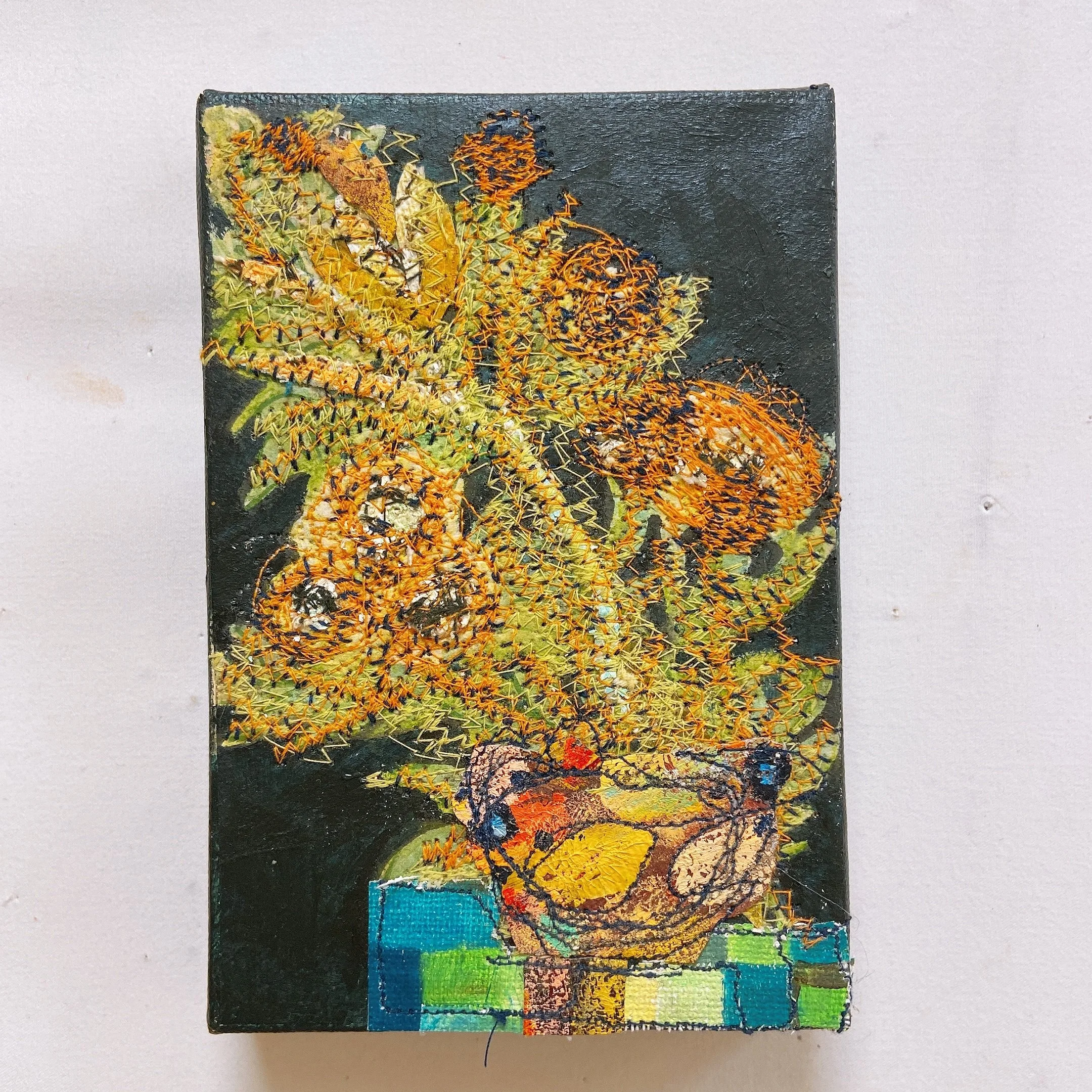On-Kyeong Seong
Artist Statement
I have long been fascinated with the sewing machine, both as a symbol of domestic labor and as a tool for my art. My work combines the manual techniques of painting and stitches with a sewing machine as the automatic drawing tool. By directly stitching into an unstretched canvas with mixed medium collages, I create robust and visceral textures that are reminiscent of fluids in an organism. The machine’s needle works as an apparatus, responding to my emotional energy. In contrast to the technical aesthetics of abstraction, my work emphasizes experimentation and balances elements of control and spontaneity.
I am inspired by Betty Woodman, whose hybrid sculptures developed a formal yet playful vocabulary that questioned preconceptions of ceramic works as “crafts.” A quilt artist Mary Fifield Adams and Ghada Amer, both of which contain a sensory intensity that I find is unique to textiles and tactile art. I draw from their techniques of careful embroidery, imbuing each image I create with its own symbolic meaning. For example, flowers, for me, are symbols of life as well as memento mori––a reminder of life’s fragility, and impermanence.
The vulnerability of sewing and stitching in my art can carry multiple layers of meaning, often tied to themes of repair, resilience, care, and the passage of time. The perform of stitching suggests a delicate balance between strength and fragility. Thread can bind and reinforce, but it can also fray and break, symbolizing the impermanence of materials and human efforts.
In my own practice, where stitching intersects with abstract painting, vulnerability emerge in how stitches disrupt and complement organic textures, reflecting the precarious balance of nature. Stitched lines sometimes hold together something fragile, much like our relationship with this blue planet.
My works are personal homages to needle works, once considered to be a form of low art and “women’s work.” In conversation with this tradition of domestic artistry, my work provides a new reading of woman’s work, which have historically been relegated to the domestic realm. By embracing the decorative and domestic labor of needle work in a transgressive way, my work can expand our understanding of womanhood.






















